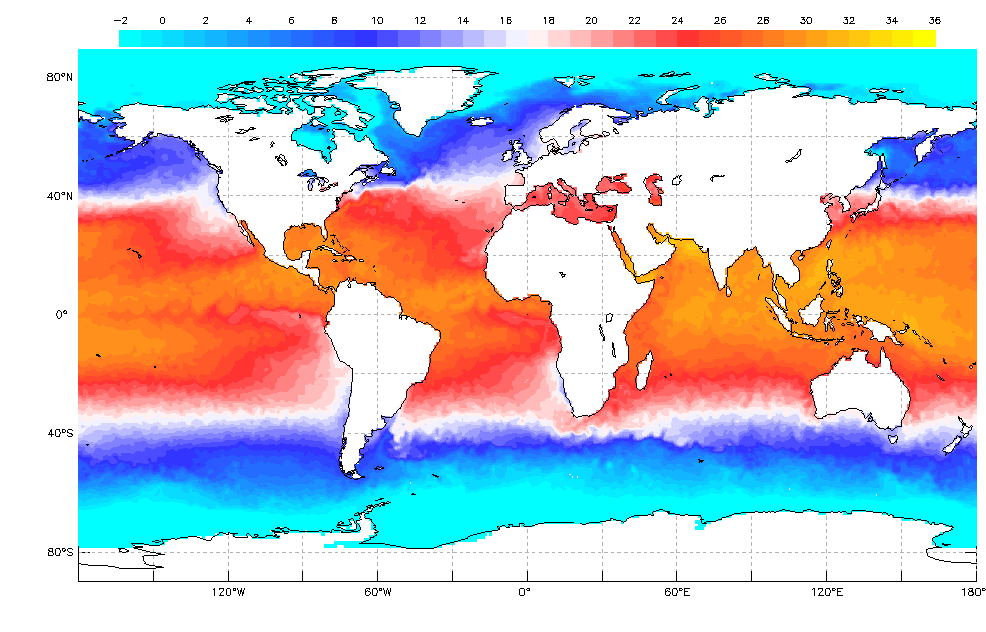GLOBE Connections
GLOBE Protocol Bundle: ENSO
ENSO (El Niño Southern Oscillation) Protocol Bundle
El Niño and La Niña are important climatic phenomenon that can have impacts on the climate globally causing flooding and droughts as well as changes in seasonal weather. These interactions around the world are called teleconnections. Considering the importance of this issue, a GLOBE ENSO (El Niño Southern Oscillation) Campaign has been formulated to engage students in determining where and how much El Niño affects local places and to put students in contact with the resulting patterns in their local environment. (Source: GLOBE ENSO Protocol Bundle)
The GLOBE database provides data submitted by individuals for specific protocols which can be used in investigations. In addition, there are additional data available in the My NASA Data Earth System Data Explorer. These data can provide context and background information or provide data for additional locations. There are also data for additional parameters not included in GLOBE.
Related Earth System Data Explorer data sets:
Explore the MND GLOBE Connections Datasets spreadsheet to review the range of datasets available to integrate with GLOBE Protocol Bundle research by visiting the link.
Dataset Recommendations and Rationale:
When investigating ENSO, there are many interrelated variables that can be explored through the Earth System Data Explorer. Some of these are directly related to a GLOBE protocol which is part of the ENSO protocol bundle. Others are indirectly related. The data sets below have been identified as those that can complement these investigations. The specific GLOBE protocols used in the bundle can be found in the section below the related Earth System Data Explorer data sets section.
These temperature data sets allow students to explore changes that may be related to ENSO. They can research monthly surface air temperature and air temperature anomalies to help put their own data in context. They can also explore surface temperatures.
- Daily Surface Air Temperature
- Monthly Daytime Surface (Skin) Temperature
- Monthly Surface Air Temperature
- Monthly Surface Air Temperature Anomaly
- Monthly Nighttime surface (Skin) Temperature
Precipitation data are complemented by cloud data and water vapor data. ENSO can lead to changes in these patterns.
- Daily High Cloud Coverage
- Daily Low Cloud Coverage
- Daily Middle Cloud Coverage
- Daily Total Cloud Coverage
- Monthly Low Cloud Coverage
- Monthly Total Cloud Coverage
- Monthly Water Vapor in the Atmosphere
- Daily Precipitation Amount
- Monthly Average Precipitation Rate
Students can also look at sea surface temperature data to find evidence of an ENSO event.
- Daily Mean Sea Surface Temperature (2005-2014)
- Monthly Mean Sea Surface Temperature

June 23, 2020
GLOBE Protocols Included:
- Atmosphere
- Air Temperature - Measure the current air temperature when an instrument shelter is not available. Current air temperature is measured using a thermometer held in the open air but in the shade for at least 3 minutes.
- Precipitation - To determine the amount of moisture input to the local environment by measuring rain and snowfall and to measure the pH of precipitation.
- Surface Temperature - Students use an infrared thermometer (IRT) to measure the temperature of Earth's surface.
- Hydrosphere
- Water Temperature - Students will measure the temperature of water.
- Pedosphere (Geosphere)
- SMAP Soil Moisture - Students will obtain in situ measurements of soil moisture that are consistent with soil moisture measurements from the Soil Moisture Active Passive (SMAP) satellite.
- Soil Temperature - Students will measure near-surface soil temperature frequently near local solar noon and seasonally throughout two diurnal cycles.

